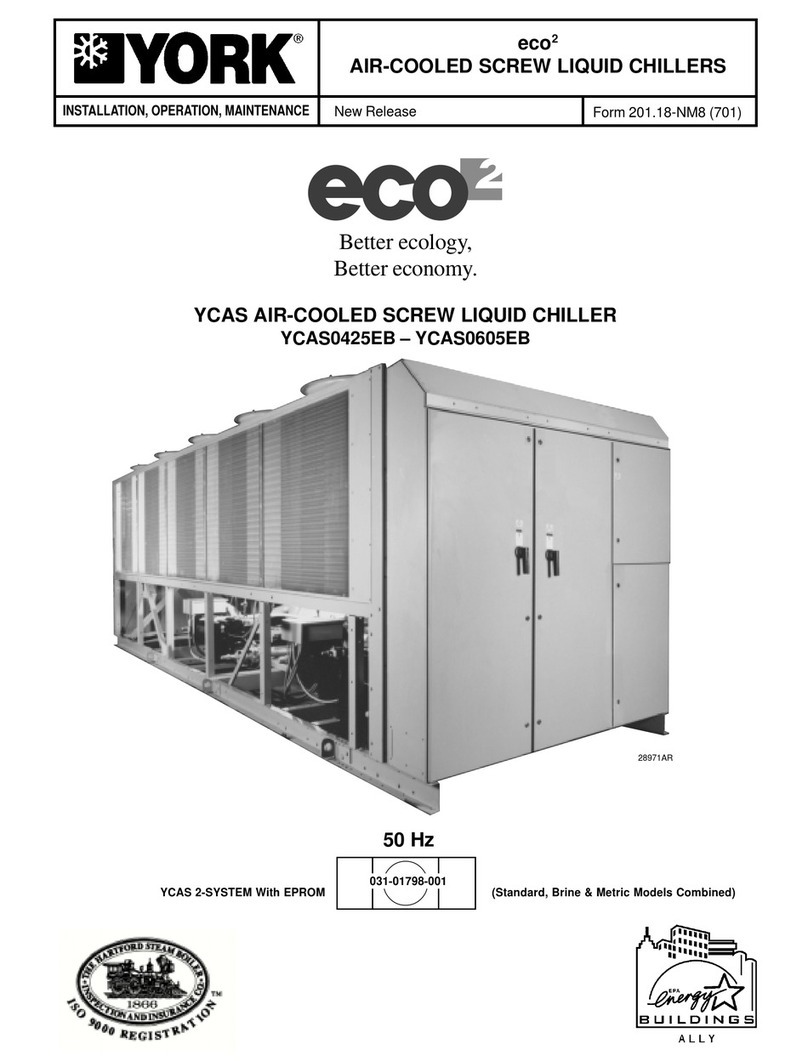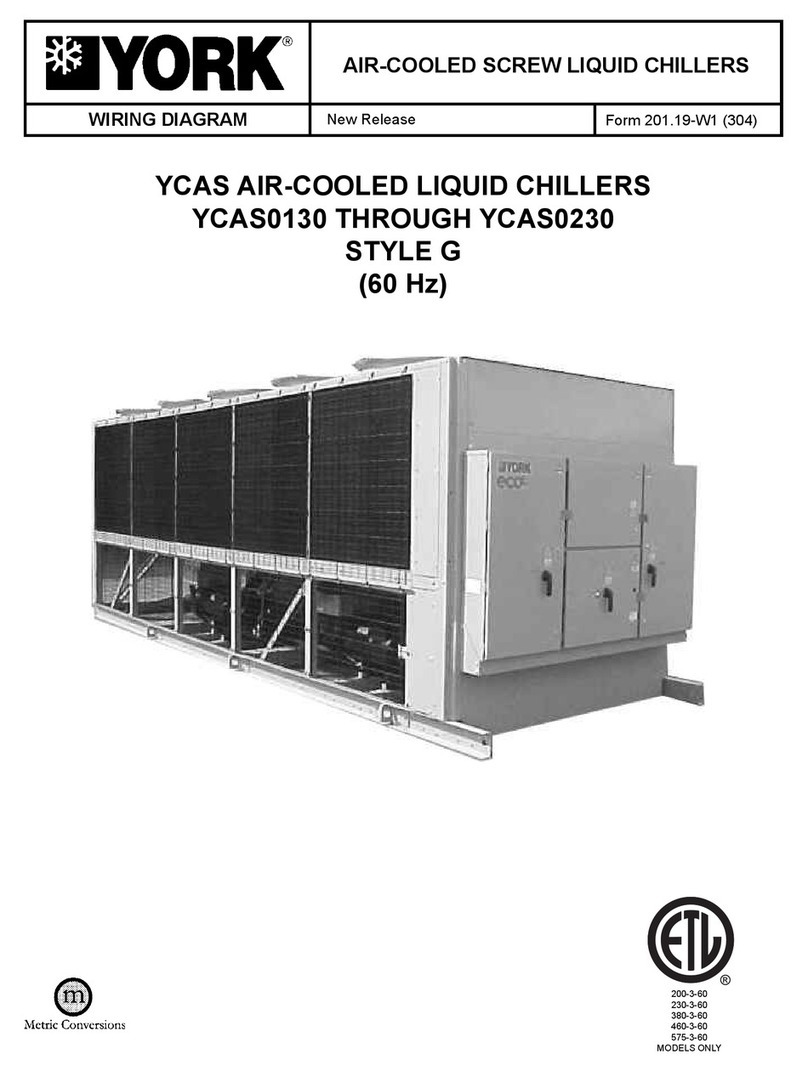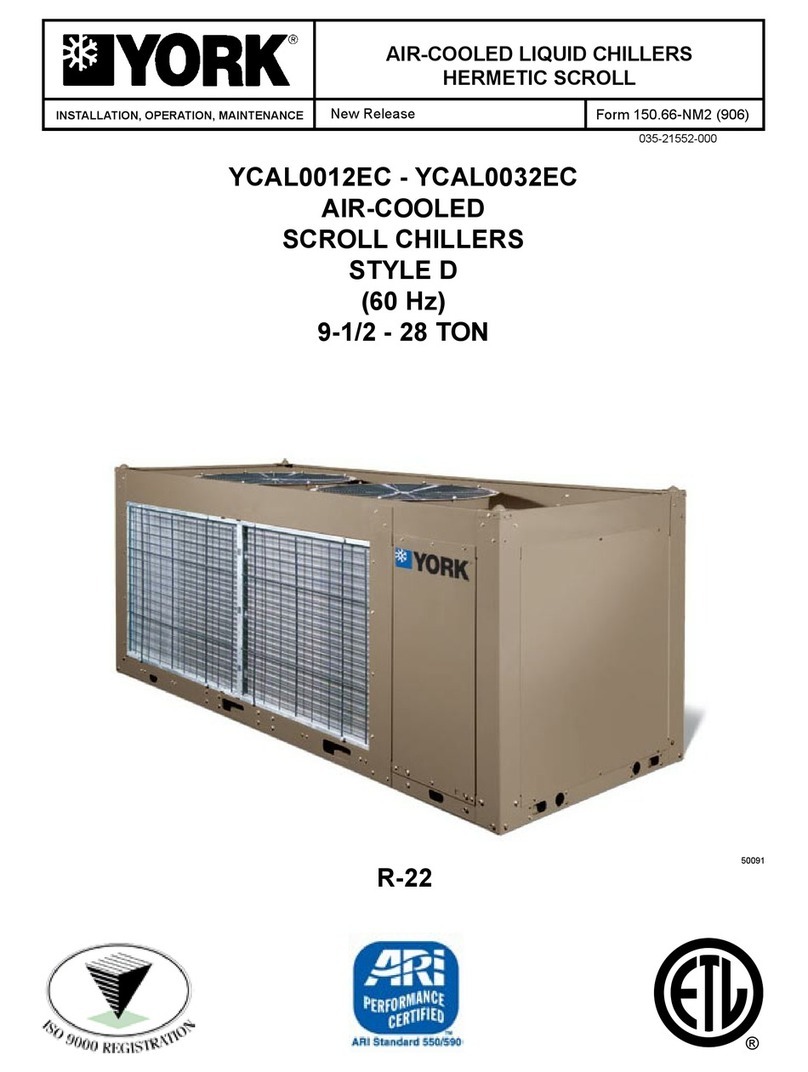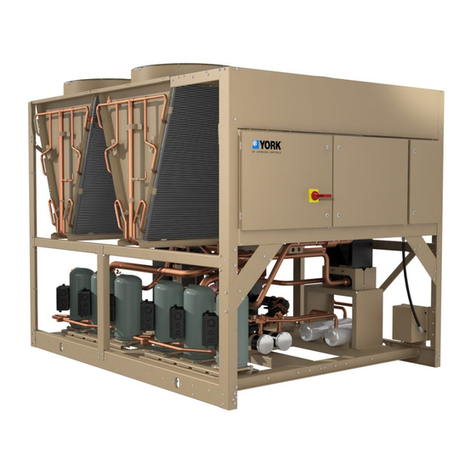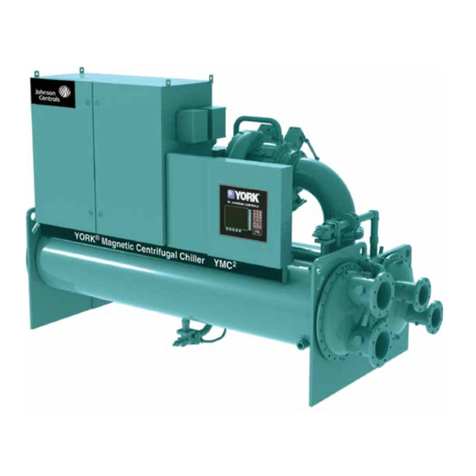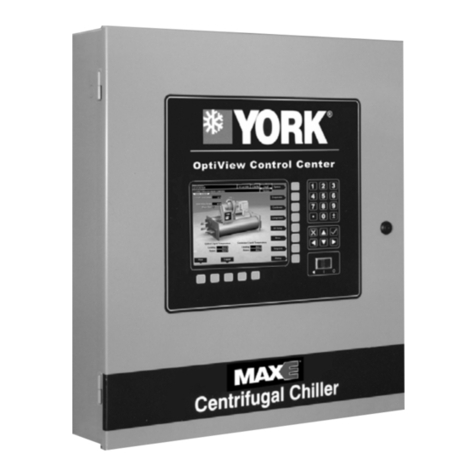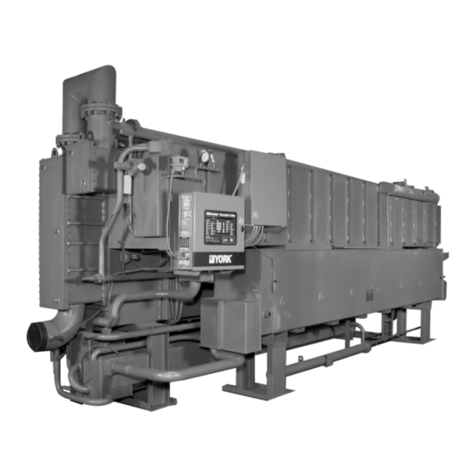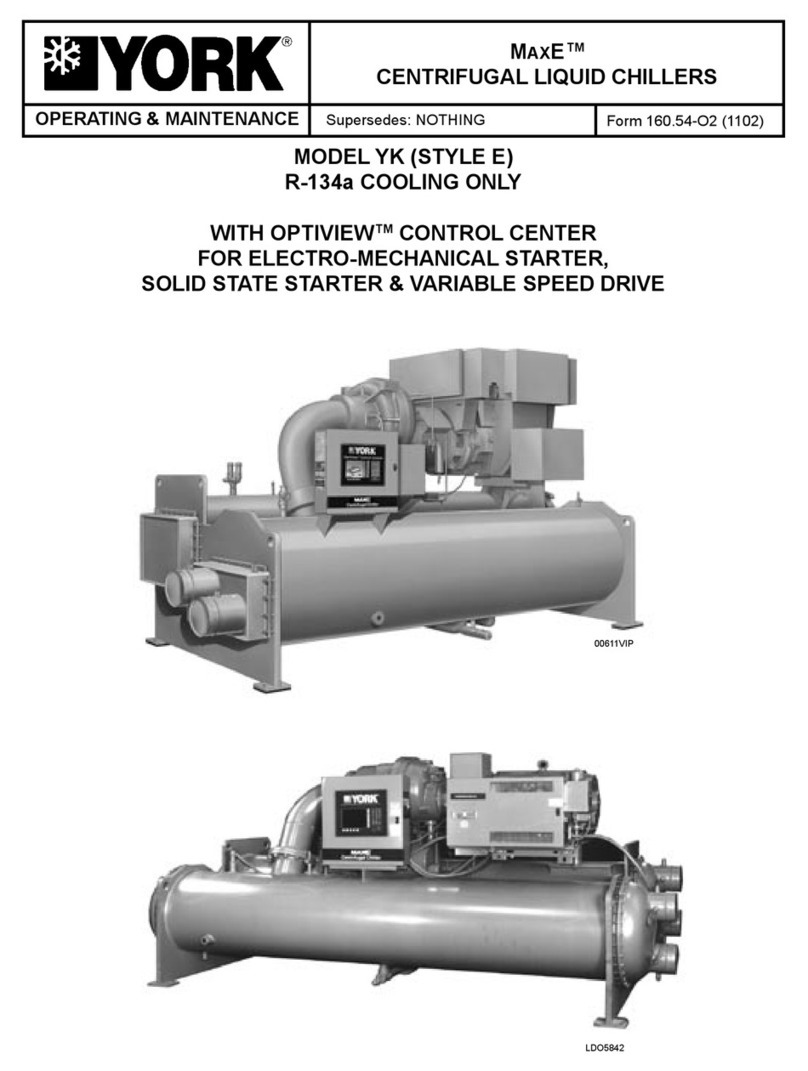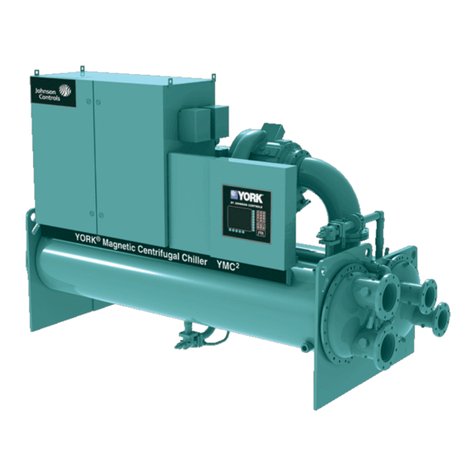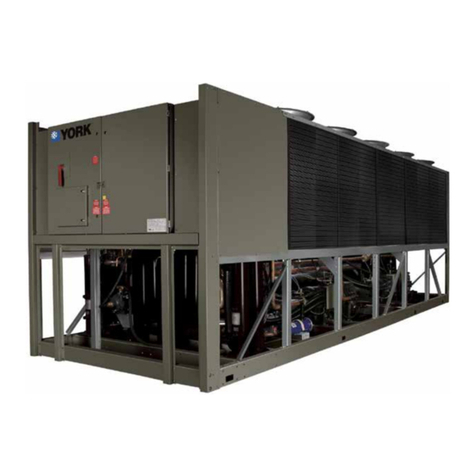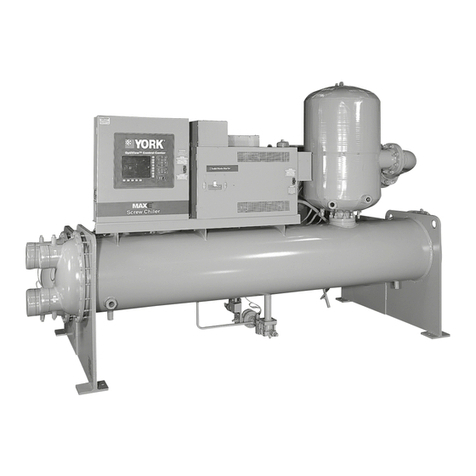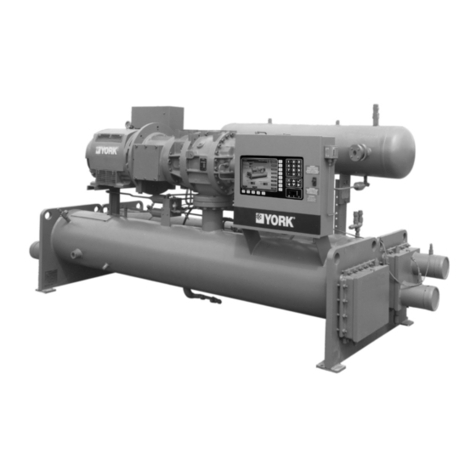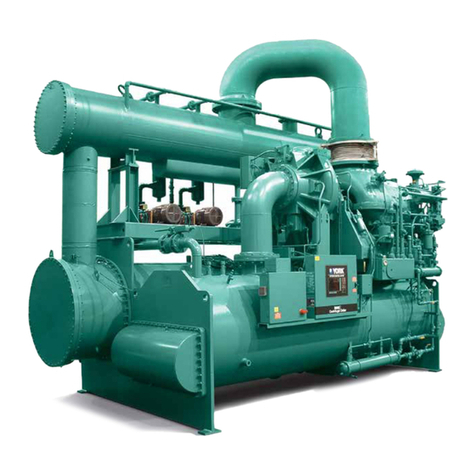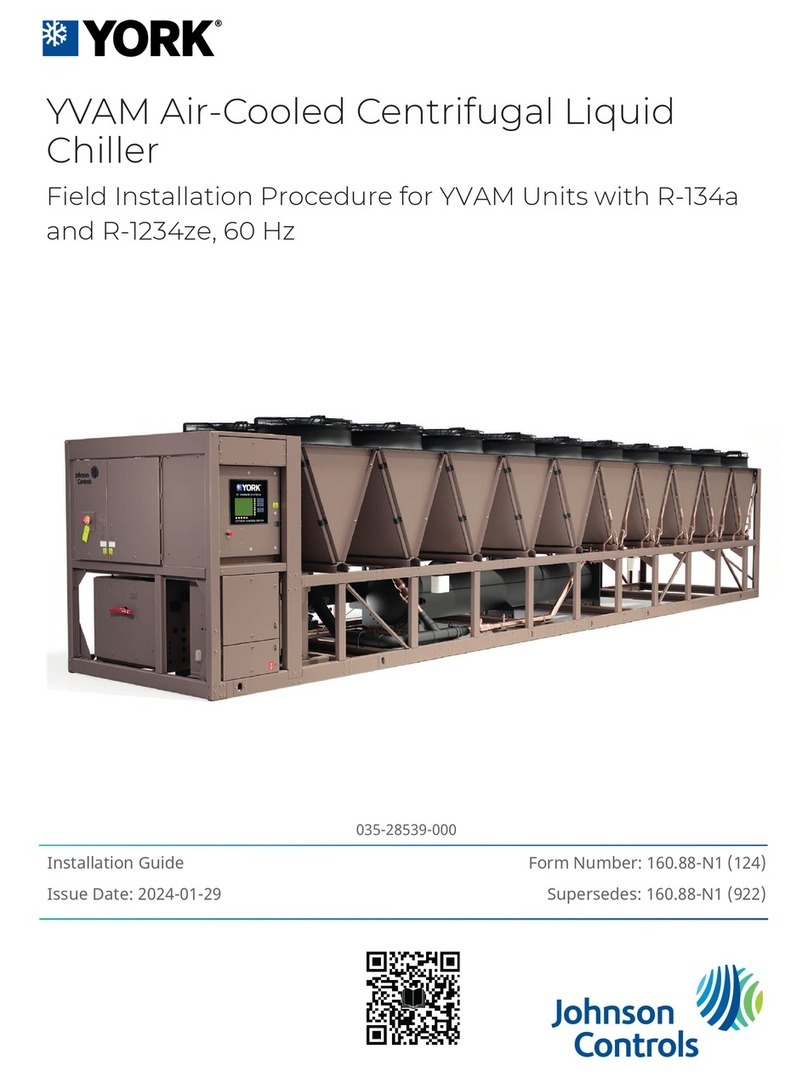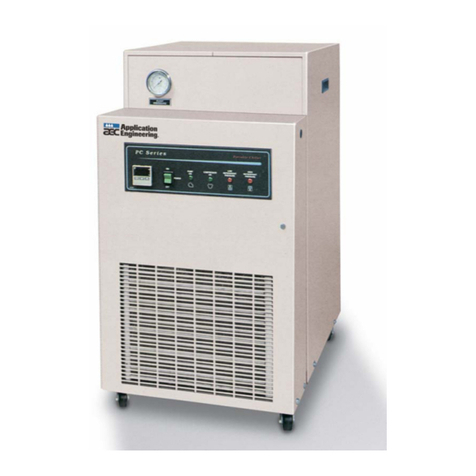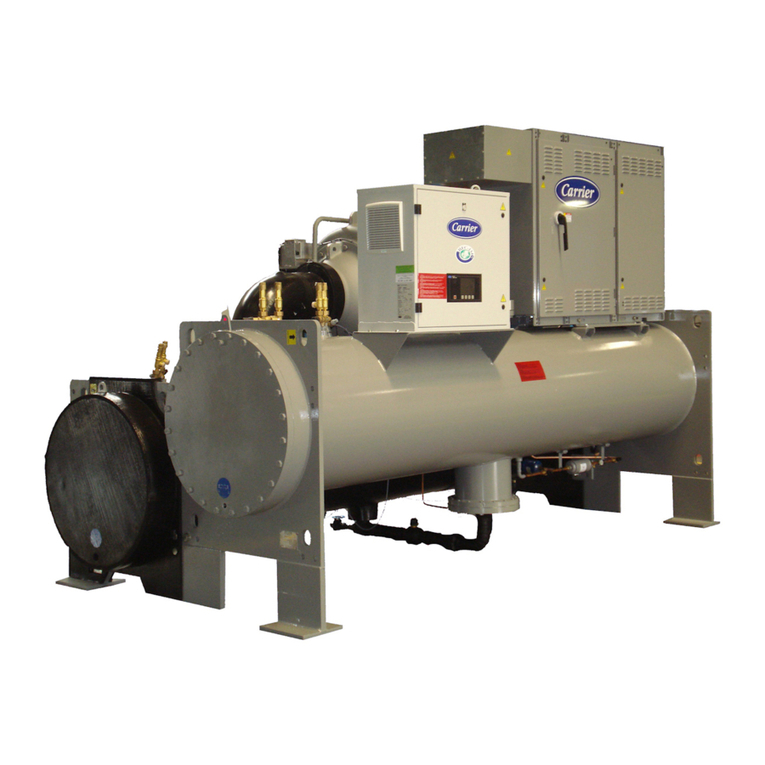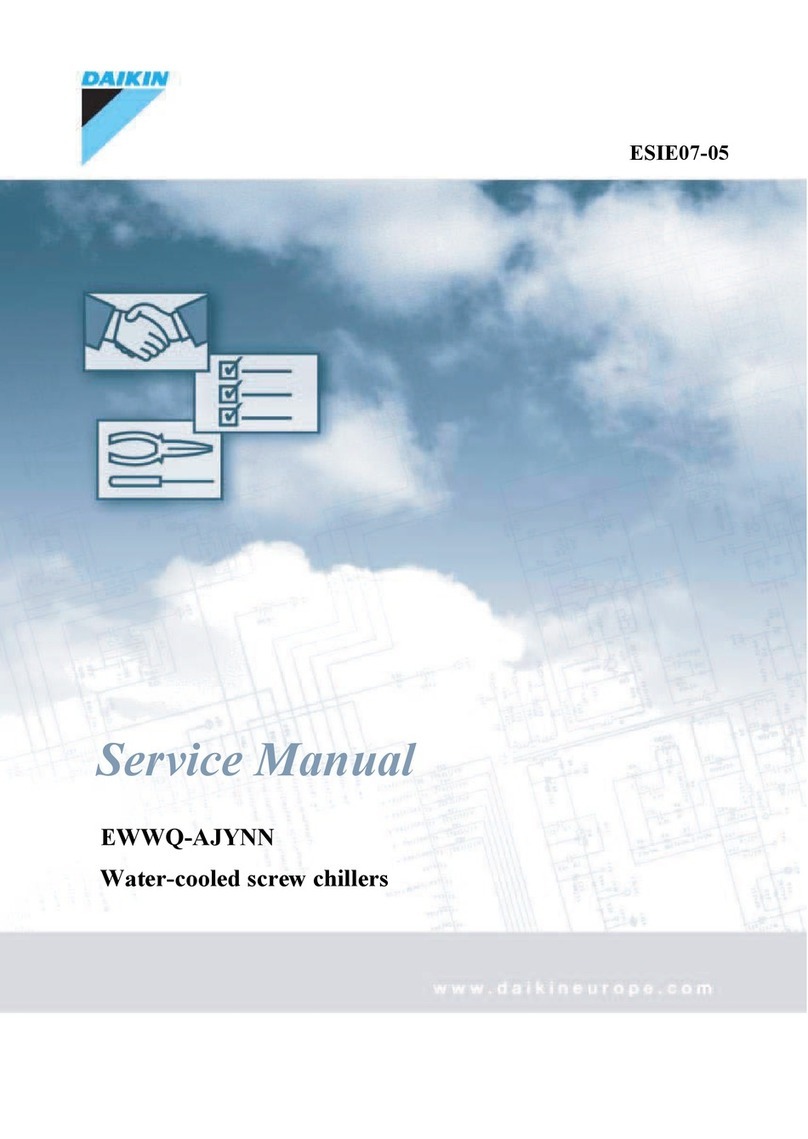
9
YORK INTERNATIONAL
FORM 201.18-NM9 (602)
Table 1 Motor Protector Dip Switch Setting Across-The-Line Start, 60 Hz ..................................................... 20
Table 2 Motor Protector Dip Switch Setting Across-The-Line Start, 50 Hz ..................................................... 21
Table 3 Motor Protector Dip Switch Setting Wye-Delta Start, 60 Hz ............................................................... 22
Table 4 Motor Protector Dip Switch Setting Wye-Delta Start, 50 Hz ............................................................... 23
Table 5 Temperatures and Flows English Units, 60 Hz ...................................................................................... 50
Table 6 Temperatures and Flows SI Units, 60 Hz .............................................................................................. 50
Table 7 Temperatures and Flows SI Units, 50 Hz .............................................................................................. 51
Table 8 Physical Data English Units, 60 Hz, R-407c Optimized ....................................................................... 52
Table 9 Physical Data SI Units, 60 Hz, R-407c Optimized ............................................................................... 53
Table 10 Physical Data SI, 50 Hz, R-407c Optimized .......................................................................................... 54
Table 11 Operating Limitations English Units 60 Hz ........................................................................................... 55
Table 12 60 Hz Sound Power Data ........................................................................................................................... 55
Table 13 Operating Limitations SI Units 60 Hz .................................................................................................... 56
Table 14 60 Hz Sound Power Data ........................................................................................................................... 56
Table 15 Operating Limitations SI Units 50 Hz .................................................................................................... 57
Table 16 50 Hz Sound Power Data ........................................................................................................................... 57
Table 17 Multiple Point Power Supply Connection 3 & 4 Compressor Units ................................................... 58
Table 18 Optional Single-Point Power Supply Connection with Individual System Circuit Brea ers
3 & 4 Compressor Units ............................................................................................................................ 60
Table 19 Control Power Supply (Units without Standard Control Circuit Transformers) .................................... 60
Table 20 Control Power Supply (Units with Standard Control Circuit Transformers) .......................................... 61
Table 21 Multiple Point Power Supply Connection 3 & 4 Compressor Units (50 Hz) ..................................... 66
Table 22 Optional Single-Point Power Supply Connection with Individual System Circuit Brea ers
3 & 4 Compressor Units ............................................................................................................................ 66
Table 23 Control Power Supply (Units without Standard Control Circuit Transformers) .................................... 68
Table 24 Control Power Supply (Units with Standard Control Circuit Transformers) .......................................... 68
Table 25 Compressor Data ........................................................................................................................................ 69
Table 26 Fan Data (-46) ............................................................................................................................................. 69
Table 27 Aluminum Fin Weight Distribution (lbs.) ................................................................................................ 145
Table 28 Aluminum Fin Weight Distribution ( gs.) ............................................................................................... 145
Table 29 Aluminum Fins Neoprene Mount Selection - VMC Type RD-X ....................................................... 146
Table 30 Aluminum Fins 1" Isolator Selection - VMC Type CP-X-XX ............................................................ 146
Table 31 Aluminum Fins Seismic Isolator Selections - VMC Model # AWMR-X-XXX .................................. 146
Table 32 Copper Fin Weight Distribution (lbs.) ..................................................................................................... 147
Table 33 Copper Fin Weight Distribution ( gs.) .................................................................................................... 147
Table 34 Copper Fins Neoprene Mount Selection - VMC Type RD-X ............................................................ 147
Table 35 Copper Fins 1" Isolator Selection - VMC Type CP-X-XX ................................................................ 147
Table 36 Copper Fins Seismic Isolator Selections - VMC Model # AWMR-X-XXX ...................................... 147
Table 37 Copper Fin w/ Optional Silencer Kit Weight Distribution (lbs.) ............................................................ 147
Table 38 Copper Fin w/ Optional Silencer Kit Weight Distribution ( gs.) ........................................................... 147
Table 39 Copper Fins w/ Optional Silencer Kit Neoprene Mount Selection - VMC Type RD-X ................... 147
Table 40 Copper Fins w/ Optional Silencer Kit 1" Isolator Selection - VMC Type CP-X-XX ........................ 147
Table 41 Copper Fins w/ Optional Silencer Kit Seismic Isolator Selections -
VMC Model # AWMR-X-XXX .............................................................................................................. 147
Table 42 Aluminum Fins Weight Distribution ( gs.) by Model ............................................................................ 154
Table 43 Aluminum Fins, Seismic Isolator Selections VMC Type RD-4 ........................................................... 154
Table 44 Aluminum Fins, 1" Isolator Selections - VMC Type CP-2-XX ............................................................. 154
Table 45 Aluminum Fins, Seismic Isolator Selections - VMC Model # AWMR-X-XXX .................................... 154
Table 46 Copper Fins Weight Distribution ( gs.) by Model ................................................................................. 155
Table 47 Copper Fins, Seismic Isolator Selections VMC Type RD-4 ............................................................... 155
Table 48 Copper Fins, 1" Isolator Selections - VMC Type CP-2-XX .................................................................. 155
Table 49 Copper Fins, Seismic Isolator Selections - VMC Model # AWMR-X-XXX ........................................ 155
Table 50 Condenser Fan Control and Fan Contactor Data for DXST Units with 3 Fans/System ....................... 217
Table 51 Condenser Fan Control and Fan Contactor Data for DXST Units with 4 Fans/System ....................... 217
Table 52 Condenser Fan Control and Fan Contactor Data for DXST Units with 5 Fans/System ....................... 218
Table 53 Condenser Fan Control and Fan Conatctor Data for DXST Units with 6 Fans/System ....................... 218
Table 54 Condenser Fan Control and Fan Contactor Data for DXST Units with 4 Fans/System ....................... 220
Table 55 Condenser Fan Control and Fan Contactor Data for DXST Units with 5 Fans/System ....................... 221
Table 56 Maintenance requirements for YORK YCAS Screw Chillers ................................................................. 224
Table 57 General Periodic Maintenance Chec s for Standard Units ...................................................................... 225
Table 58 Competent Persons Troubleshooting Guide ........................................................................................... 227
LIST OF TABLES
